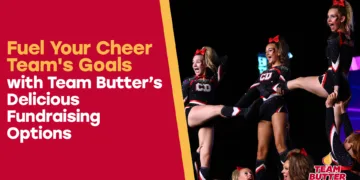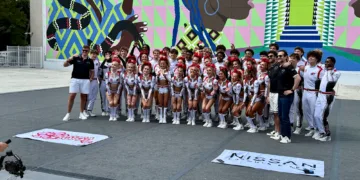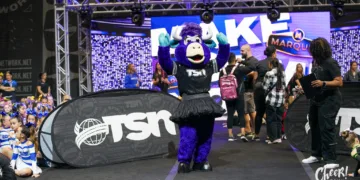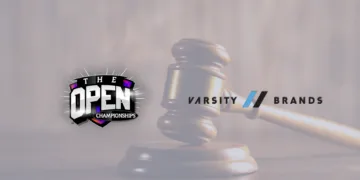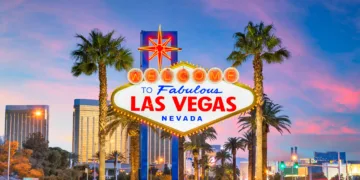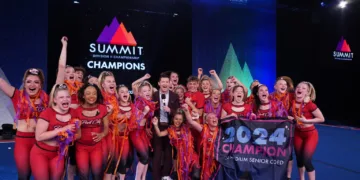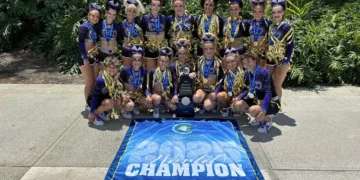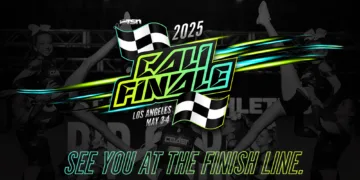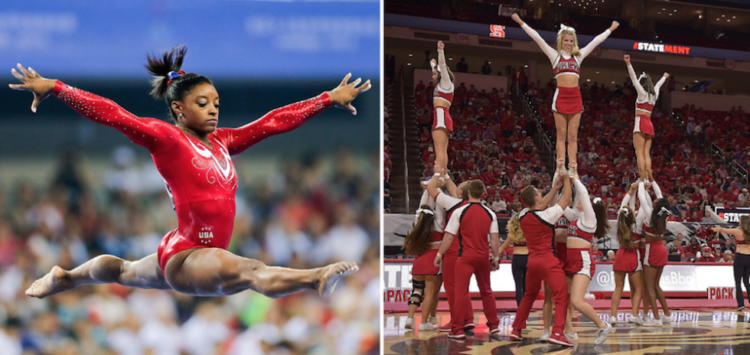When you watch gymnastics or figure skating, the music playing during their routines is an integral part of the performance. It sets the tone, adds drama, and enhances the overall presentation. So why don’t we see the same musical accompaniment in cheerleading competitions, particularly during broadcasts? The answer lies in the complex world of music licensing.
In the United States, public venues like arenas and stadiums typically operate under something called a “blanket license.” This license allows the venue to play a vast catalog of music, with the fees being distributed among artists, songwriters, and publishers. This arrangement works well for live events but gets complicated when these events are broadcasted.
When competitions are broadcasted, the way music is handled can significantly impact licensing costs. For most U.S. broadcasts, the music is recorded as part of the arena sound, making it “background music.” This method often circumvents the need for a separate, broadcast-specific license, which can be quite expensive. If broadcasters were to pipe the music directly into the audio feed, it would require a full broadcast license. Given the high costs, networks might opt to avoid broadcasting musical sports altogether.
The licensing complexities increase on the international stage. Different countries have varying laws regarding public music performance, leading to a maze of regulations that can be difficult to navigate. For international competitions, securing the necessary rights is crucial to avoid legal complications.
The Olympics present a unique challenge. All music used in Olympic sports must be fully licensed. This requirement is why athletes sometimes need to change their routines close to the Games, as seen with Russian gymnast Angelina Melnikova. Each piece of music must be approved and paid for to meet the strict Olympic standards.
Sports like figure skating and gymnastics manage music licensing through their governing bodies. For example, the U.S. Figure Skating Association (USFSA) pays blanket fees to organizations like ASCAP. When athletes register for competitions, they submit their music choices, and the necessary licenses are handled by the USFSA, the rink, and the broadcasters.
Cheerleading faces additional challenges because it often combines music with live vocals and other sound effects, complicating the licensing process further. The need to synchronize music with live elements means cheerleading routines can’t rely on the same blanket licenses used by gymnastics or figure skating. Additionally, the varied nature of cheerleading music, which often includes popular songs and custom mixes, adds layers of complexity in securing the necessary rights for both live performances and broadcasts.
Another layer of complexity for cheerleading is that teams technically need permission to use copyrighted music in their routines. This requirement means that every song and sound clip used in a cheer routine must be individually licensed, adding both time and cost to the process. This necessity can deter teams from using popular music, opting instead for royalty-free or custom-created tracks.
Cheer music might sound like it’s from another planet, but it’s governed by the same copyright laws as the rest of the music industry. Cheer mixes touch on two sets of legal rights—performance rights and master use rights—which have to be licensed separately. Performance rights apply to a song’s notes and chords. Gyms and cheer competitions pay performing rights organizations, like ASCAP and BMI, which in turn pay songwriters, for the privilege of playing their notes and chords in public. It’s relatively cheap and easy: ASCAP licenses their entire catalog to a single-day cheer competition with 3,000 people in attendance for just $90.
Master use rights are a bit trickier. They concern what happens to a copy of a song recording, which is typically owned by a record label. You can’t edit a song and sell it in a cheer mix without the label’s explicit permission, and fees can start in the thousands of dollars, in the unlikely event that permission is granted at all.
In 2014, Sony Music Entertainment sued two individuals and four companies in New York Federal Court over unauthorized use of their music in cheerleading competition mixes. This lawsuit highlighted the serious legal implications of using copyrighted music without proper licensing and sent shockwaves through the cheerleading community. As a result, cheerleading organizations had to reassess how they approached music in routines to avoid similar legal issues.
In 2016, after the Sony lawsuit, USA Cheer issued new music guidelines, which Varsity immediately adopted and circulated among coaches. These guidelines specified that all routine music must be covers of popular songs or original compositions. USA Cheer also created a list of “preferred music providers,” who are the only approved source of those covers and originals. These providers are independent cheer music companies that sign agreements to properly license their work and grant teams the right to use it.
While it may seem unfair that gymnasts get to perform with musical accompaniment while cheerleaders do not, the reasons are rooted in the intricate and costly world of music licensing. Until a more streamlined solution is found, cheerleading routines will continue to shine with their impressive acrobatics and spirited performances, even without the musical backdrop that their counterparts in gymnastics enjoy.
We want to hear from you! Share your thoughts and experiences on the use of music in cheerleading routines. Do you think the current licensing rules are fair, or do you have ideas for improvements?






